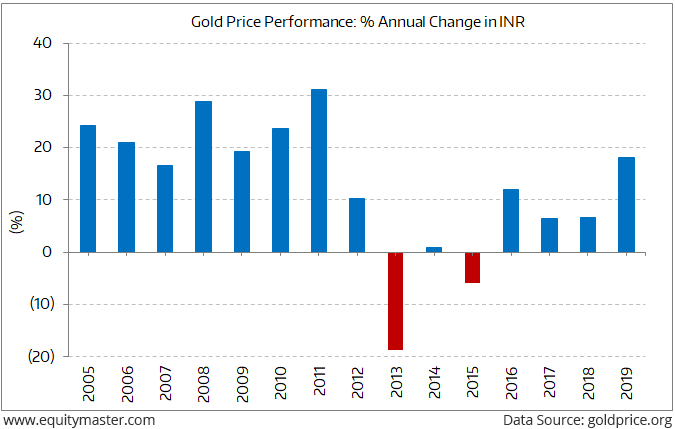India's Third Giant Leap
This Could be One of the Biggest Opportunities for Investors
- Home
- Todays Market
- Indian Stock Market News January 8, 2020
Sensex Opens Lower; Capital Goods Stocks Lose the Most Wed, 8 Jan 09:30 am
Asian stock markets are lower today as Japanese and Hong Kong shares fall. The Nikkei 225 is off 2% while the Hang Seng is down 0.5%. The Shanghai Composite is trading down by 0.4%. Wall Street's major indices declined on Tuesday as investor caution persisted amid a dispute between the United States and Iran, while energy shares fell as oil prices gave back some recent gains.
Back home, India share markets opened on a negative note. The BSE Sensex is trading down by 245 points while the NSE Nifty is trading down by 67 points. Both, the BSE Mid Cap index and BSE Small Cap index opened the day down by 0.8%.
Except IT stocks, all sectoral indices have opened the day in red with banking stocks, capital goods stocks and realty stocks witnessing maximum selling pressure.
The rupee is currently trading at 72.01 against the US$.
Speaking of Indian share markets, in the video below, Rahul Shah shares a timeless tip that can help investors to earn market beating returns in 2020 and beyond.
Tune in to find out more...
In the news from the commodities space. Oil prices jumped to their highest in months today after Iran attacked American forces in Iraq in response to a US strike that killed an Iranian general last week, raising the spectra of a spiraling conflict and disrupted oil supplies.
Brent crude futures soared US$1.83, or 2.7%, to US$70.1 after earlier rising to US$71.75, the highest since mid-September 2019.
Meanwhile, gold prices surged more than 2% today, crossing the key US$1,600 mark, as investors sought cover in the safe-haven metal after Iran fired rockets.
Gold prices hit their highest since March 2013 at US$1,610.9 earlier in the session. US gold futures rose 2% to US$1,605.8.
Speaking of gold, how lucrative has gold been as a long-term investment in India?
The chart below shows the annual returns on gold over the last 15 years...
Gold Has Been a Shining Long-Term Investment
As you can see, barring just two years - 2013 and 2015, gold has delivered positive returns in 13 of the last 15 years.
Here's what Ankit Shah wrote about this in one of the editions of The 5 Minute WrapUp...
- "In fact, gold has delivered double-digit gains in 10 of the last 15 years.
During the entire 15-year period, gold has shot up 555% (compounded annual return of 12.1%).
During the same period, the Sensex surged 511% (compounded annual return of 12.0%). If you include dividends, the Sensex returns would be higher than gold by a couple of percentage points.
One must note that the Sensex returns are not representative of the broader market returns. Moreover, gold was a no-brainer. You didn't have to study financial statements, business models and forecast future earnings growth to get a double-digit return on your investment."
Moving on to the news from the economy. The national income released by the National Statistical Office (NSO) has pegged India's GDP growth to an 11-year low of 5% in the current fiscal, mainly due to poor showing by manufacturing and construction sectors.
As per the report, the manufacturing sector output growth will decelerate to 2% in 2019-20, down from 6.9% in the previous financial year.
Likewise, the construction sector growth is estimated at 3.2% as against 8.7% in 2018-19.
According to back series GDP data released by the government in November 2018, the previous low in economic growth was recorded at 3.1% in 2008-09.
The dismal performance for the fiscal was anticipated as the Gross Domestic Product (GDP) growth in the first quarter was 5% and 4.5% in the subsequent three-months period.
The Reserve Bank of India (RBI) had also lowered its forecast for the economic growth to 5% while announcing its bi-monthly monetary policy last month.
The macro-economic data is important as Finance Minister Nirmala Sitharaman would be using it for preparing Budget estimates for the next financial year. She is expected to present the Budget 2020-21 in Parliament on February 1.
The NSO data further revealed that deceleration in growth will also be witnessed in other key segments, like agriculture; electricity; gas and water supply; trade; hotel and transport sector; financial; real estate; and professional services.
Whereas, some sectors, including mining, public administration, and defence, showed minor improvement.
As per the advance estimates for 2019-20, the growth in real GDP during 2019-20 is estimated at 5% as compared to 6.8% in 2018-19.
To know what's moving the Indian stock markets today, check out the most recent share market updates here.
For information on how to pick stocks that have the potential to deliver big returns, download our special report now!
Read the latest Market Commentary



Equitymaster requests your view! Post a comment on "Sensex Opens Lower; Capital Goods Stocks Lose the Most". Click here!
Comments are moderated by Equitymaster, in accordance with the Terms of Use, and may not appear
on this article until they have been reviewed and deemed appropriate for posting.
In the meantime, you may want to share this article with your friends!